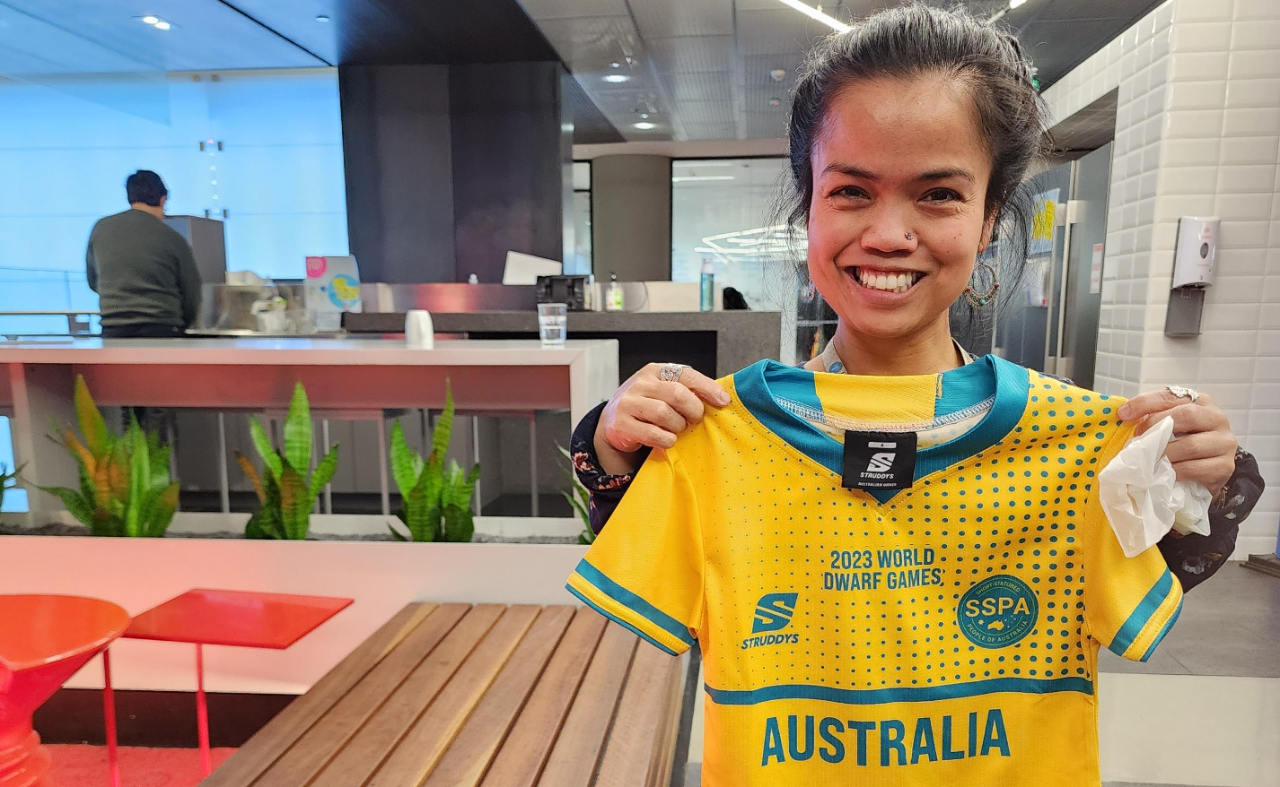Inside ANZ
Every culture has a legendary archer…ANZ’s is Kat Ramos
“Artemis, the ancient Greek goddess of the hunt, is usually portrayed with a bow and arrow. Kat, too, is a hunter – and not only on the athletic field.”

Kat Ramos was first attracted to archery as a child, watching movies like “Robin Hood,” an unexpected hero defending those in need.
Growing up in the Philippines, however, resources and money were tight and when she asked a coach at her school if she could try it she was immediately told no. They didn’t have any equipment available for someone her size.
Kat is a short-statured person, or “shorty”. It wasn’t until she’d participated in her first World Dwarf Games in 2000, the same year she joined ANZ, that she discovered what would someday become her gold-medal sport.
“In 2000, I thought, ‘Oh, whoa. There is this! I’d like to try it,’” she said. However, as she couldn’t register on the spot she decided to plan to enlist in the next games. “I’ll look it up in Australia if there is some coaching or some archery range where I can actually try. Or if they have a bow.”
Once back from the games Kat found the Moorabbin Archery Club, a coach and the elusive bow and arrows necessary for her shorter arms and legs. The club attracts all ages, cultures and abilities. “Archery is a very accessible sport,” she said, as you don’t have to stand very long or run.
This year’s World Dwarf Games are 28 July to 5 August in Cologne, Germany. Kat said she’s a bit nervous about the travel and competition but loves going to the games because “you see a lot of people the same as you, and at eye level too.”
There will be approximately 500 short-statured athletes from around the world, 38 of them from Australia, with about 70 archery competitors overall. Kat won the gold medal in archery in 2017, the last time the games were held. So this year she’ll be defending her title.
For competitions, Kat needs to use what’s called a barebow – a basic style of ‘recurve’ bow which uses modern materials but does not permit accessories to aid in aiming or stabilisation. To shoot the arrows, she needs to use her fingers to pull back on the string and release the arrow with energy stored in her bent arms, using about 10 kilograms of force. Targets are up to 30 metres away.
That’s the physical part. There’s also a lot going on mentally.
“You have to focus. If you think of what's stressful and get distracted, you lose your form. It's not just like, ‘just shoot an arrow’. You have to shoot that now. You have to relax your arm, your head should have a certain way of looking at the target. And the way you release the arrows. The strain on the bow.”
Artemis, the ancient Greek goddess of the hunt, is usually portrayed with a bow and arrow. Kat, too, is a hunter – and not only on the athletic field.
She came across bank security in much the same way she discovered archery – she saw it as interesting and put her hand up to learn more. It was 2010 and she was in her first job, a graduate employee of ANZ, and her first rotation was in what was then known as Information Security.
“We were reviewing Excel sheets,” she said. “I thought, ‘Hold on, this is not security.’” Then one of the team members gave her the background and end-to-end process of code review and she was hooked.
“I wasn’t very good at coding and knew I couldn’t really do the development (of web applications), but I could still understand it and explain things.”
At the same time, she’d been hearing stories outside the bank about security systems being compromised and people being victimized.
“I thought, ‘that’s terrible! What if something like that happens to my family?’ I want to do something about it.”
She put her hunting instincts to work, reviewing source codes, then moving to penetration testing in 2021.
This means she searches for weaknesses in the bank’s web applications, using the same tools, processes and techniques as cyber attackers in order to prevent and stop hackers and helps keep customers safe.
She and the team help stop phishing and other technology scams by making sure the bank’s applications are protected from those vulnerabilities. They search for things that look out of the ordinary.
“Hackers sometimes prey on customers by using a false bank link. It’s our job to make sure those attempts are unsuccessful.”
Upon finding the weaknesses, Kat and the team report back to the developers who then find ways to fix the applications. This is where that hyper focus she uses on the field comes into play.
“I have to review what’s being reported in the findings of an application,” she explained. “I have to focus and find out if it’s really a finding, or if it’s a false positive.”
It takes some communications finesse to raise the risk awareness with the developers, who are justifiably protective of their work. Time is of the essence, as well as consideration on budgets, vendor relationships and delivery.
“I have to get that target. If you don’t focus on the target, you’ll miss it. It’s the same with vulnerability that you find in your application or your project. There will be more consequences if you don’t hit it.”
Amanda Crane is a Communications Manager at ANZ
*Update: Kat Ramos has received two gold medals in 9m and 18m archery in the Dwarf Olympics held in Germany.

related articles:
Inside ANZ
Diversity is key in conquering the cyber challenge
Inside ANZ
